Ever noticed plants growing from trees or with roots sticking out of the ground? Some plants can do this because they have aerial roots.
Aerial roots are different from typical roots. They often appear on vines and creepers. These roots anchor the plant to walls or trees. They also absorb moisture from humid air, rain, and nutrients from other trees or the ground.
Aerial roots are usually adventitious roots. These roots don’t grow from root tissue. Instead, they sprout from nodes, stems, or branches.
Plants in swamps or marshes have roots in the ground. To release and absorb gasses from the air, they have above-ground breathing roots. Epiphytes, however, don’t grow from the soil. They use other plants for support.
Let’s look at some popular plants with aerial roots. This way, you can spot them next time you see them.
4 Key Takeaways on Plants With Aerial Roots
- Aerial roots on plants like orchids and bromeliads help them absorb moisture and nutrients from the air, aiding their growth in humid environments.
- Epiphytic plants use aerial roots for stability and to anchor themselves to trees or structures without needing soil.
- Aerial roots on trees like banyans and mangroves provide structural support and help absorb nutrients, adapting to diverse habitats.
- Aerial roots on houseplants such as pothos and spider plants serve functions like climbing and propagation, responding to environmental cues.
What Are Aerial Roots and What Makes Them Important?
Aerial roots grow from a plant’s stem or branches above the soil. They have several important functions:
- Support and Anchorage – Aerial roots help climbing plants attach to structures like tree trunks or trellises. This lets them grow upwards and get more sunlight.
- Water and Nutrient Absorption – Epiphytic plants grow on other plants or surfaces. Their aerial roots absorb water and nutrients from the environment, like rainfall or humidity.
- Propagation – Some plants can grow new plants from aerial roots when they touch soil. This helps the plant spread to new areas.
- Gas Exchange and Respiration – In some species, aerial roots help with gas exchange, which is needed for respiration. These roots are common in plants in waterlogged soils, like mangroves.
- Structural Stability – In species like the banyan tree, aerial roots grow down from branches and reach the ground. This provides extra support and helps the plant spread out.
Aerial roots are a key adaptation that helps plants thrive in many environments.
11 Well-Known Plants With Aerial Roots
Aerial roots are a common feature of many popular houseplants. Below are some well-known examples.
1. Pothos (Epipremnum aureum)
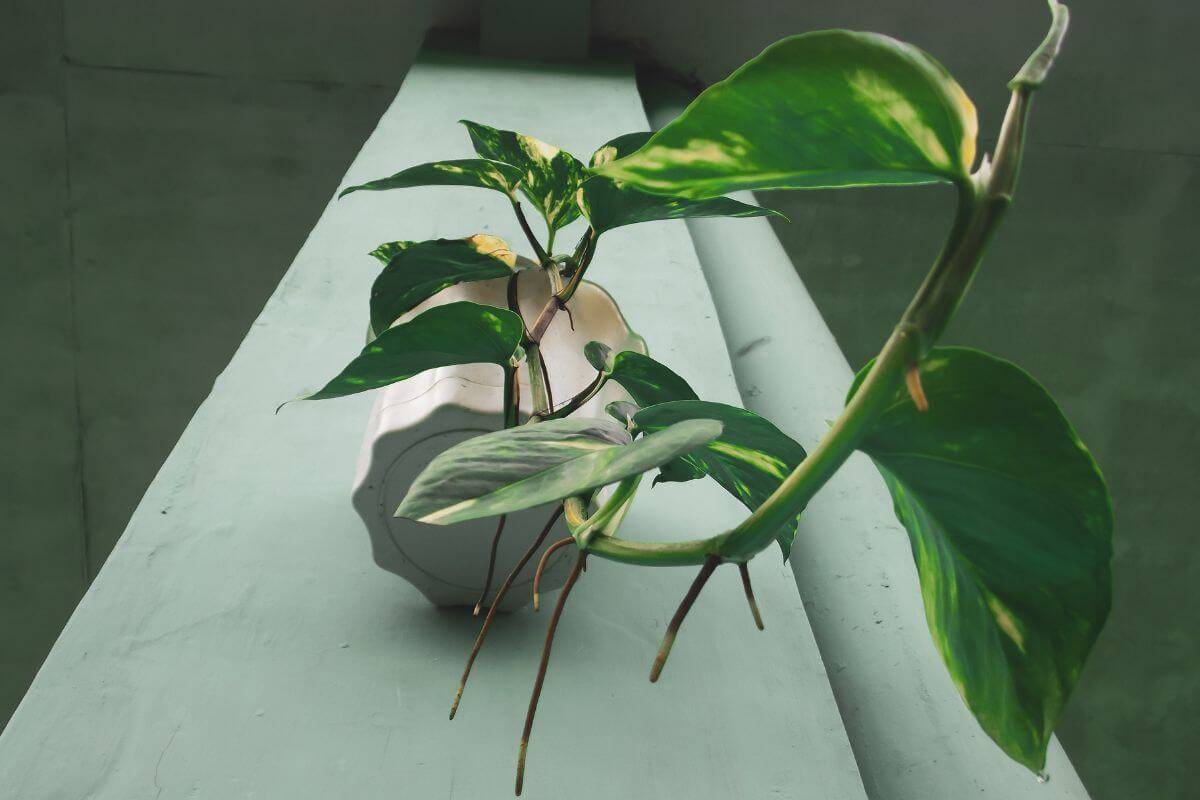
Pothos, or Devil’s Ivy, is a common houseplant. It grows aerial roots from nodes along its stems above the soil. These roots are vital for several reasons. They help the plant climb and anchor to surfaces or structures.
Aerial roots also absorb moisture and nutrients from the air. This supplements what the plant gets from the soil. They make propagation easy. You can cut a stem with aerial roots and plant it. The roots will grow into soil roots and form a new plant.
These roots are a normal part of pothos. They play a key role in the plant’s growth and health despite looking unusual.
- Learn more with our Pothos Houseplant Care Guide
2. Spider Orchids (Brassia caudate)
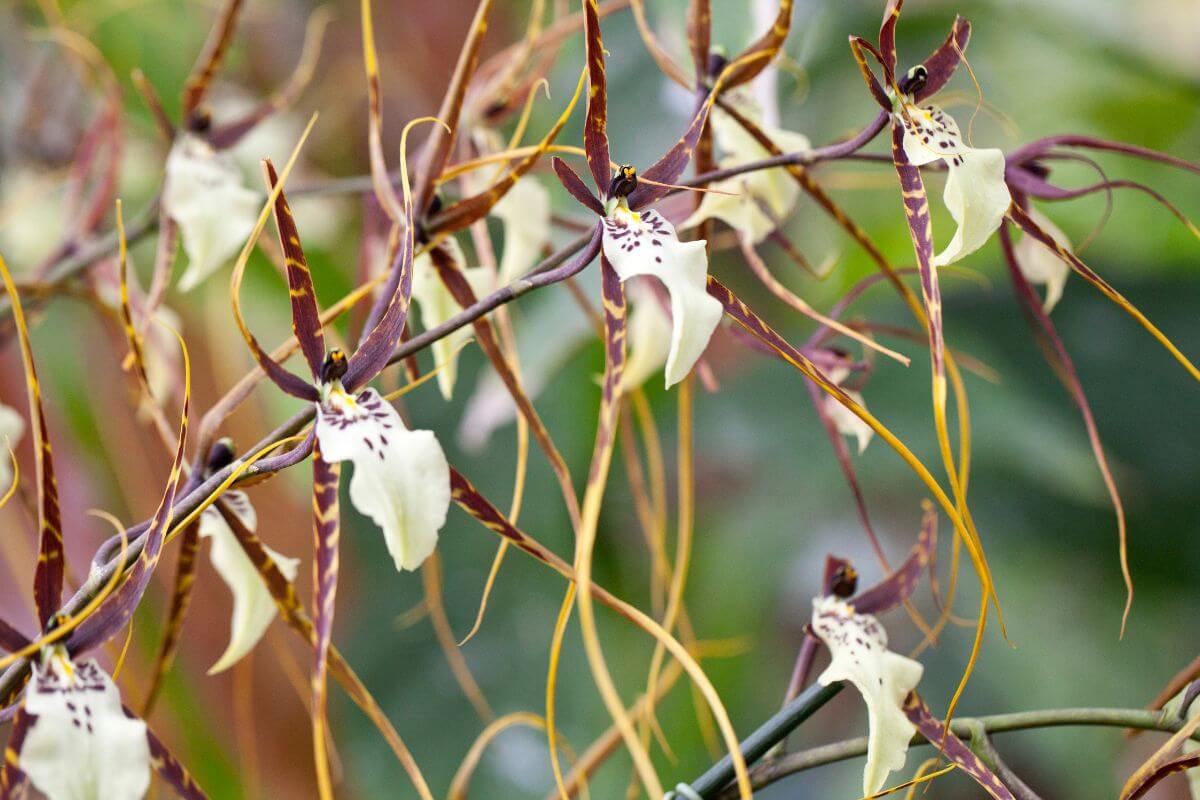
Spider orchids, or Brassia orchids, grow by developing aerial roots. These roots are vital for the plant’s health. They let the spider orchids thrive on other plants or structures without soil through a spongy tissue called velamen.
These aerial roots also provide support. They anchor the plant as it grows. You can propagate new plants by separating and potting plantlets that form along these roots. Don’t cut or remove the aerial roots because it can harm the plant.
To keep these roots healthy, maintain high humidity levels. This helps the spider orchid absorb the moisture and nutrients it needs.
3. Honey Plant (Hoya carnosa)
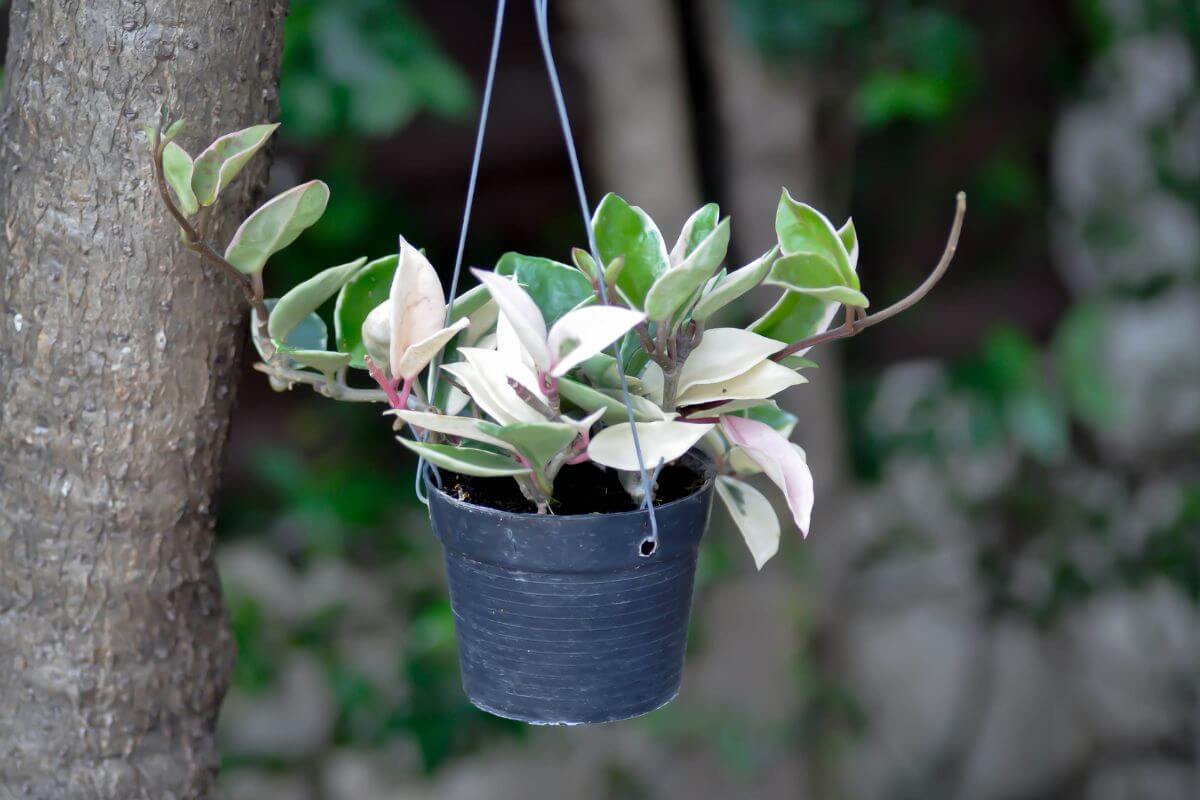
The Honey Plant, also called the wax plant or porcelain flower, is a favorite houseplant that often grows aerial roots. These white, fleshy roots sprout from the nodes along the stems above the soil. They cling to surfaces like moss poles or pots.
To care for Hoya carnosa, give it bright, indirect light and high humidity to encourage aerial root growth. These roots are helpful but can be trimmed for looks or to control the plant’s size. You can use cuttings with aerial roots to grow new plants.
Hoya does best when it’s slightly pot-bound. Repot it every 2-3 years. Use well-draining potting mixes, like those for orchids or cacti. Clay pots help the roots breathe and let the soil dry between waterings.
4. Bromeliads (Bromeliaceae)
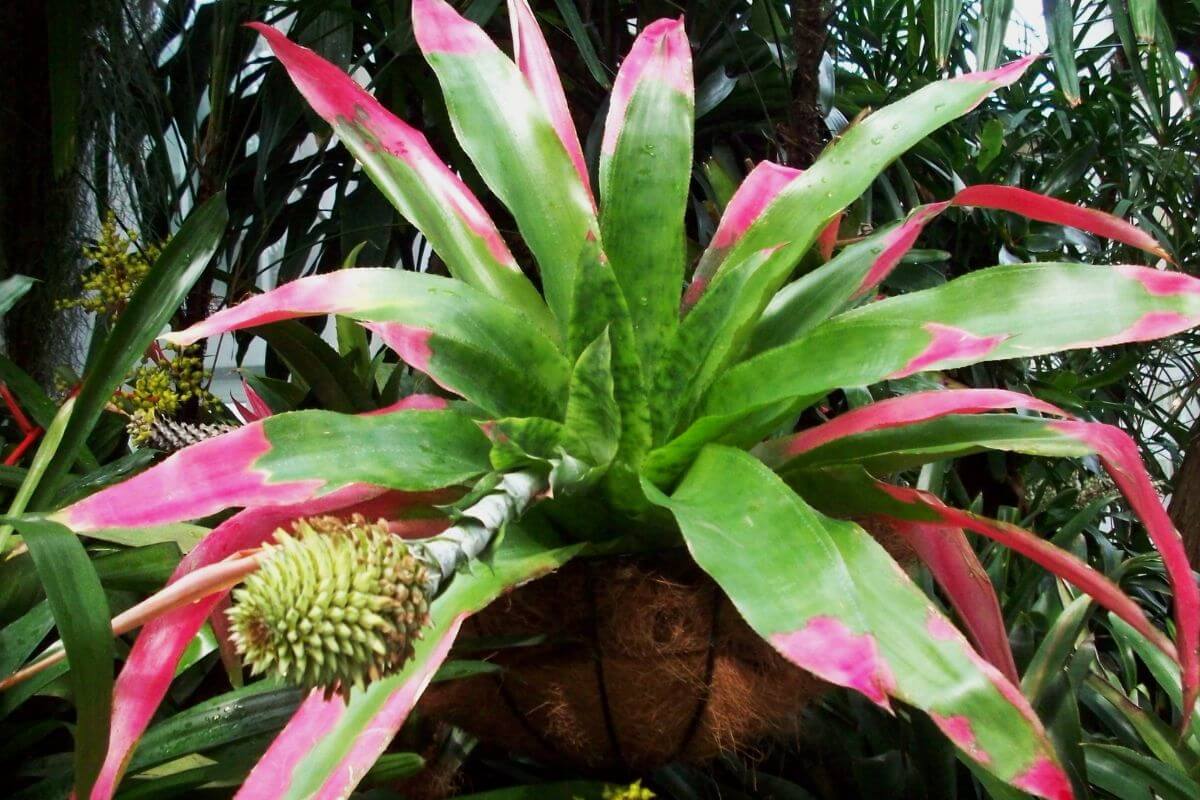
Bromeliads are diverse plants. They include both terrestrial and epiphytic species. Many, like Tillandsia (air plants), have aerial roots. These roots help the plant attach to trees, rocks, or other surfaces. They act as anchors so bromeliads can grow high in the canopy to get more light.
Bromeliads can also propagate through offsets or “pups” that grow along their aerial roots. You can separate these pups and plant them to create new plants.
Aerial roots of bromeliads are typically thin, wiry, and grayish-white. They grow outward from the plant’s base and cling to surfaces as the plant matures. Over time, these roots may elongate as the bromeliad grows larger.
5. Tillandsias (Tillandsia ionantha)
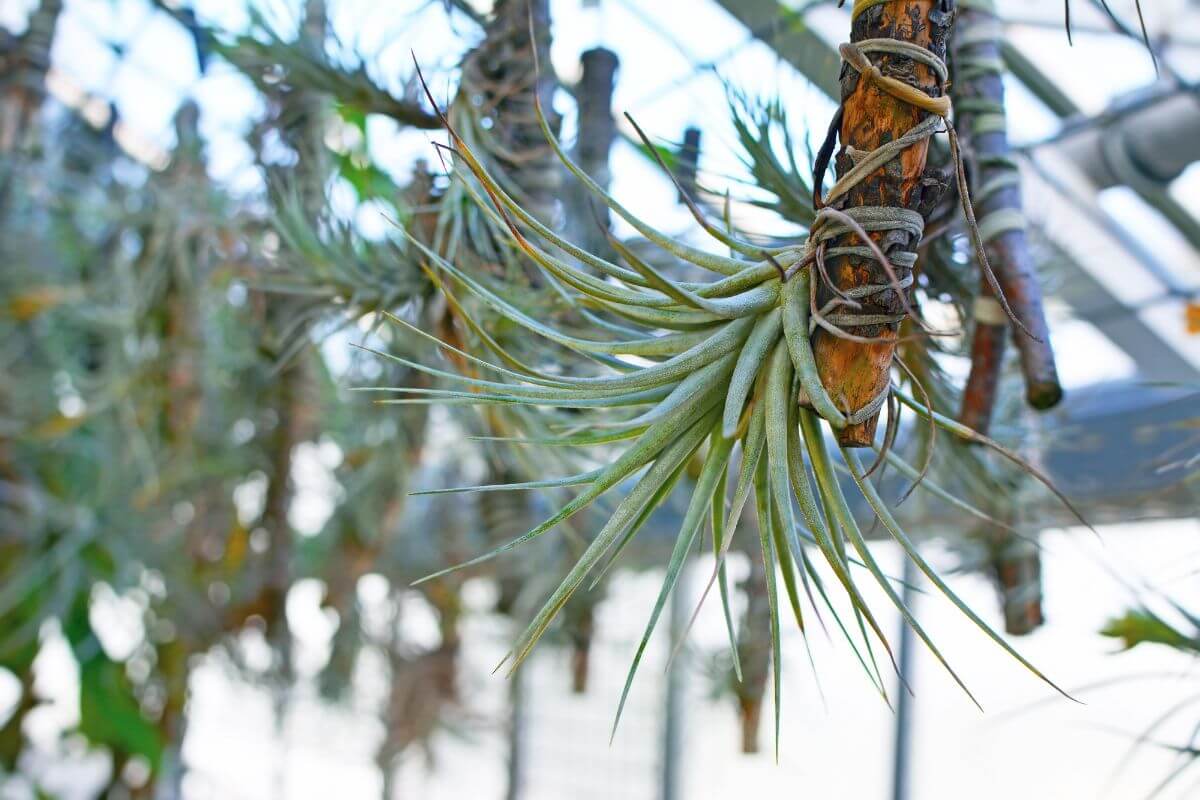
Tillandsias, or air plants, are about 650 evergreen species known for their unique aerial roots. These roots do several important jobs.
They help air plants attach to trees or rocks. This lets them grow high and get more light. The roots also take in moisture and minerals from the air and rain through special tissues called trichomes.
Air plants can make new plants, called “pups,” along their roots. You can separate and plant these pups to grow new air plants. The roots are thin and grayish-white. They grow out from the plant’s base and hold onto surfaces as the plant grows. Over time, they get longer.
For the best care, mount or place air plants where their roots can attach to something. High humidity and regular misting help their roots grow well. You don’t need to trim the roots unless you want to for looks.
6. Ferns (Polypodiopsida or Polypodiophyta)

Ferns are fascinating plants. They reproduce through spores and don’t have seeds or flowers. Many ferns have underground rhizomes, but some grow aerial roots.
Rhizomes, the stems of ferns, can grow underground or above ground. Tree ferns have tall semi-woody trunks, sometimes reaching 20 meters. Fern leaves, called fronds, are complex and often start as coiled “fiddleheads.”
Ferns are found all over the world, especially in tropical and subtropical areas. They can grow on the ground, other plants, or even in water. There are about 10,560 species of ferns, from small floating ones to tall tree ferns.
Not all ferns have aerial roots. Those that do are usually epiphytic, meaning they grow on other plants.
7. Mangrove Trees (Rhizophora)

Mangrove trees, like the Rhizophora, are fascinating. They thrive in coastal areas where other plants can’t survive. These trees have unique roots that stick out of the water. This helps them get oxygen even when submerged.
You might wonder why mangroves are important. They protect shorelines from erosion because their roots hold the soil. They also provide a home for many fish and birds. Plus, mangroves filter pollutants from water. This keeps coastal ecosystems healthy.
If you want to plant a mangrove, here are some tips:
1. Choose a sunny spot near the coast.
2. Make sure the soil is salty and wet.
3. Plant the tree during the rainy season for the best growth.
Mangroves are vital for the environment. By planting them, you help protect coastal areas and support wildlife.
8. Moth Orchids (Phalaenopsis amabilis)
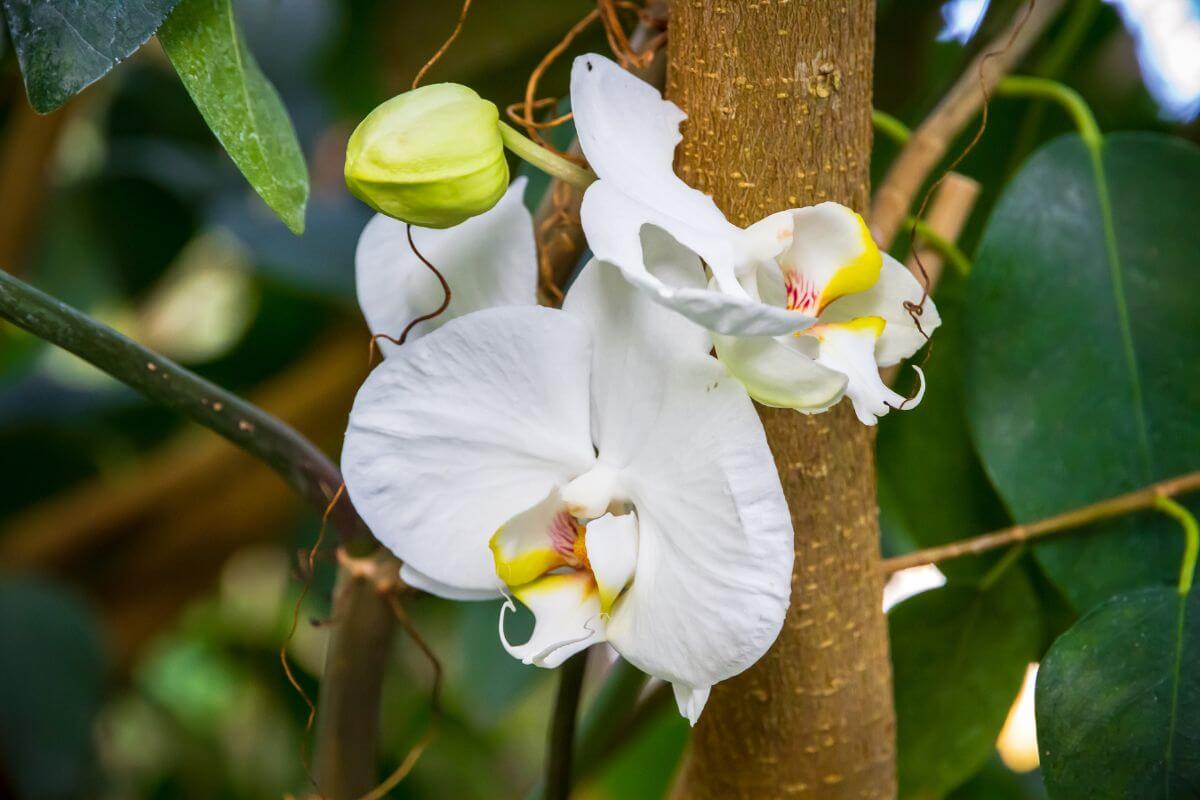
Phalaenopsis orchids, also called moth orchids, have unique aerial roots. These roots play several important roles. Moth orchids grow on trees in tropical areas.
The aerial roots anchor the orchid to tree bark and take in minerals from around the plant, including decaying organic matter. This supplements what the plant gets from the potting medium. This helps the orchid thrive high in the tree canopy where it can get more light.
Healthy aerial roots are thick and white or green. They look glossy and plump because of a spongy tissue called velamen that helps in absorption.
These roots grow from nodes along the plant’s stem and come out above the potting mix. As the plant matures, the aerial roots may keep growing. They cling to the pot or support like a moss pole. This ensures the orchid’s stability and nutrient intake.
9. Banyan Fig Tree (Ficus benghalensis)

The Banyan fig tree, a member of the Ficus species, is famous for its aerial roots. These roots descend from branches to the ground and act as extra trunks and prop roots. They give the Banyan tree strong support which lets it grow very large and spread wide.
These roots also help the tree get more than what it gets from the soil. When aerial roots reach the ground, they can take root and form new Banyan trees.
Banyan aerial roots start as small bumps on branches. They grow into thick, woody structures, sometimes as large as the main trunk. Mature Banyan trees can have dozens or even hundreds of these aerial root “trunks” spreading from the main canopy.
10. Pandan Tree (Pandanus tectorius)

The Pandanus tree, or screwpine, stands out because of its unique aerial roots. These roots serve many important purposes.
Roots hanging from Pandanus branches act like extra trunks. They help the tree grow tall by giving it more support with nutrient absorption. This helps the tree’s main roots in the soil. When these roots touch the ground, they can grow into new Pandanus trees. This way, the tree spreads and thrives in new places.
At first, these aerial roots look like small bumps on branches. But they grow into thick, woody structures that can look like small tree trunks. Mature Pandanus trees often have many of these root “trunks” coming from the main canopy. This makes them stable and gives them a unique look in tropical landscapes.
11. Umbrella Plant (Schefflera arboricola)

Aerial roots on umbrella plants usually appear when the plant is stressed or not growing well. Common reasons include being in a small pot, low humidity, not enough light, or pruning that limits root growth.
These roots start as small bumps on the stem above the soil and grow into thick, woody structures. They often appear on the lower part of the plant where the stem bends.
In the wild, umbrella plants use aerial roots to anchor themselves to trees or other surfaces as they climb. But indoors, these roots don’t do much. They don’t provide much support or absorb many nutrients. Instead, they grow mainly because of environmental stress.
Popular Plants With Aerial Roots Final Thoughts
Aerial roots are a cool and important feature for many plants. They help plants thrive in different places. These roots give support, anchor the plant, and help absorb water and nutrients.
For example, the banyan tree has a wide network of roots. Orchids and bromeliads have aerial roots too. These roots show how adaptable and tough plants can be. Knowing about them can help you take better care of your plants, whether you’re a gardener or just love nature.
Plants With Aerial Roots FAQs
1. What Are Aerial Roots and What Do They Do?
Aerial roots are specialized roots that grow above the ground, serving multiple functions such as anchoring plants to structures, absorbing moisture and nutrients from the air, and aiding in plant stability and propagation.
2. Which Plants Commonly Have Aerial Roots?
Plants like orchids, pothos, bromeliads, mangroves, and ficus species (including banyan trees) are well-known for their aerial roots. These roots vary in appearance and function but generally help the plants adapt to diverse environments.
3. How Do Aerial Roots Benefit Plants Like Orchids and Bromeliads?
Aerial roots on orchids and bromeliads absorb moisture and nutrients from the air, supplementing what they receive from the ground. They also provide structural support, allowing these plants to thrive in elevated positions like trees or rocky surfaces.
4. Can You Propagate Plants Using Their Aerial Roots?
Yes, many plants with aerial roots, such as pothos and spider plants, produce plantlets along their aerial roots that can be separated and planted to grow new plants. This method is used in both natural environments and home gardening.
To learn more about plants for your garden, check out these amazing articles:

